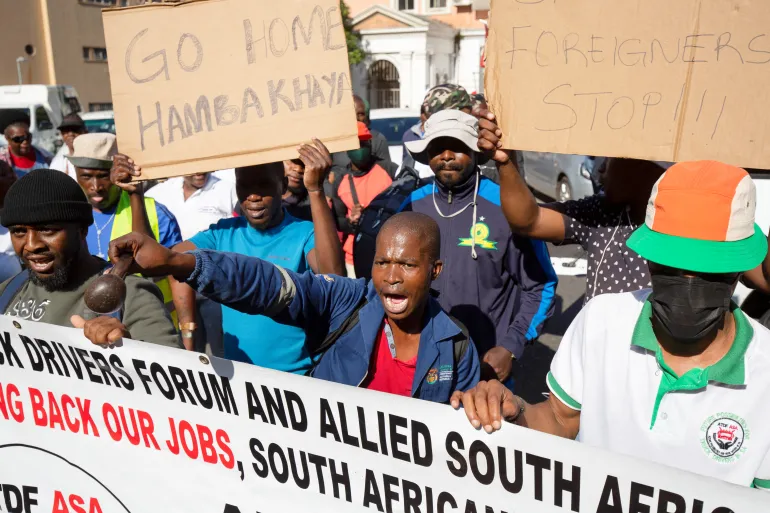The Limpopo River, a seasonal waterway, has become a quiet yet active route for Zimbabwean migrants illegally crossing into South Africa. As the riverbed dries, it offers an easy passage for people fleeing economic hardship and drought in Zimbabwe. Despite the rising anti-immigration sentiments in South Africa, the border remains surprisingly unguarded in some areas, allowing migrants to move with relative ease.
Young men, women with children, and even elderly individuals cross the dried riverbed, often without facing any major obstacles. “You can’t stop someone who is suffering,” one migrant said anonymously, explaining the desperate need for survival. These crossings, though illegal, have become a lifeline for many Zimbabweans looking for better opportunities in South Africa.
While the South African government has been ramping up efforts to curb illegal immigration, the reality on the ground tells a different story. The border, particularly in remote areas, is poorly guarded. A knee-high barbed wire fence, installed in 2020, is often trampled and full of holes. Border patrols are sporadic, and many migrants simply walk through blind spots, evading detection.
This lack of effective border control contrasts sharply with the growing xenophobia in South African cities. In Johannesburg, for instance, migrants face raids and deportations, as public sentiment increasingly turns against them. “I wonder how serious our government is about dealing with immigration,” said Nomzamo Zondo, a human rights attorney. She emphasized the need for a more structured immigration policy that allows migrants to contribute to South Africa’s economy, rather than being pushed into the shadows.
One of the key challenges faced by Zimbabwean migrants is the cost of legal documentation. Precious, a mother of three, shared her struggles in a Musina shelter. With only $30 to her name, she cannot afford the $50 required for a passport. Without proper documentation, many migrants are left vulnerable to exploitation and trafficking. Shelters in Musina, a border town, are filled with people like Precious, stuck in limbo as they await opportunities to cross into South Africa.
In addition to the economic pressures, the political climate in South Africa has shifted dramatically since the end of apartheid. While Nelson Mandela envisioned a South Africa that would be a sanctuary for neighboring countries, the current atmosphere is one of increasing hostility toward migrants. Anti-immigrant groups like Operation Dudula have gained prominence, further stoking fears and resentment toward foreign nationals.
Despite these challenges, many Zimbabweans continue to make the perilous journey into South Africa, driven by the hope of a better life. The South African government faces a difficult task: balancing the need for border security with the humanitarian obligation to provide refuge to those in need.
As Zimbabwean migrants continue to cross into South Africa, the country faces a growing dilemma between enforcing stricter immigration laws and maintaining its historical role as a refuge for neighboring nations. For migrants like Precious, the journey is one of survival, but for South Africa, it represents a challenge to its identity and policies on immigration.
Recommendations:
- South Africa should invest in more effective border control measures to prevent illegal crossings while ensuring the protection of migrants’ rights.
- The South African government could consider expanding programs that allow migrants to enter the country legally and contribute to the economy.
- NGOs and human rights organizations should continue advocating for better treatment of migrants and refugees, ensuring they are not subjected to exploitation or violence.

